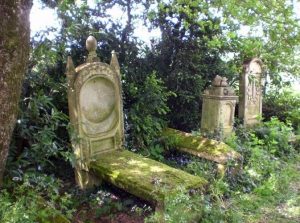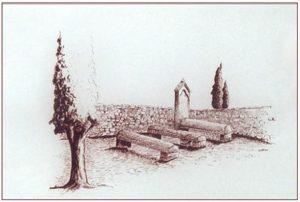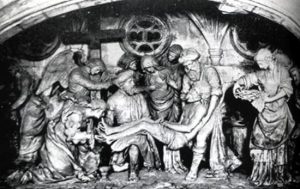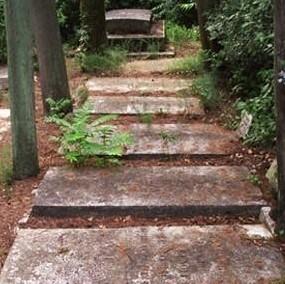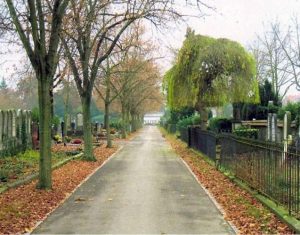Geographical area
The Middle Poitou, south of the Deux-Sèvres department (mainly the Niort area, Saint-Maixent, La Mothe-Saint-Heray, Lezay, Melle, Celles-sur-Belle) and the north-western part Moncoutant area adjoining the Vendée region. But also part of the Vienne region, mainly the Lusitanian area.
The Vendée region where more scattered communities are found in towns such as La Roche-sur-Yon, and in the Pouzauges, Chantonnay, La Châtaigneraie and Sainte-Hermine areas.
The Charente-Maritime region, mainly the Pouzauges, Chantonnay, La Châtaigneraie and Sainte-Hermine areas.
Characteristics of the Middle-Poitou region
Confronted with persecutions, Protestantism was mainly preserved in the countryside.
Although there were Protestant cemeteries in larger towns such as Melle, La Mothe-Saint-Héray and Lezay, or independent squares open to and used by the Protestant community, most cemeteries can be found in the countryside and are family cemeteries.
In spite of the 1804 law, the tradition of burying the dead in family cemeteries was maintained not only among the Protestants, but, as a result of mixed marriages, also among Catholics and laypeople.
Why did the number of family cemeteries increase throughout the 19th century when everyone had access to the communal cemetery? Several reasons can be given:
. the Protestant tradition of burying the dead at home,
. the fact that there were numerous hamlets and isolated properties over the countryside while means of transportation were limited at the time -on foot or by horse-drawn carriage-, people preferred to their dead close than burying them in the communal cemetery miles away. Thus Catholic private cemeteries were created too.
. but also until recently -about 1950- some communes had no cemetery as the 1804 law had not been implemented.
Family cemeteries can mostly be found in rural areas, for instance in villages, hamlets, secluded properties, often at the back of the garden, but sometimes in the middle of a field.
They are generally in stone enclosures or surrounded by cypresses or yews, and marked by umbrella pines. Their size vary according to that of the family, some may hold as many as about twenty tombs.
Sometimes several enclosures may be joined which means either that the families were allied or that some families, who owned no land, were allowed to build their cemetery near the owner’s.
From the end of Louis XIV‘ s reign until the mid-19th century, Protestant tombs were identified by one stone at the head and one at the feet of the deceased. Funerary monuments can be found only since the mid-19th century.
There were several tens of thousands of private cemeteries throughout the Poitou region, of which some are still being used and can be found mostly in the Lezay, La Mothe-Saint-Héray, Celles-sur-Belle, La Crèche, Melle, Saint-Maixent, Niort areas in the Deux-Sèvres department, and Lusignan in the Vienne department. They are also numerous though more scattered in the Vendée, Charente and Charente-Maritime departments.
Some appear on land registry documents, but it is seldom the case as the statement apparently had to be made only in case the cemetery was on a different owner’s land. On topographic maps, however, places with one or several crosses with the word ‘tomb’, prove that a cemetery was identified.
Nowadays, as the agricultural civilisation is disappearing, the land is sold and the families split, and the cemeteries are highly endangered. Some families still maintain cemeteries, but most are abandoned and are covered with scrub. Some families have their tombs transferred to the communal cemetery to preserve them.
In 1997 an association was founded to address this evolution. Its main purpose is to maintain and restore its members’ cemeteries. It can also give judicial advice should a conflict arise. It has launched an inventory and is working to raise awareness especially among so that this heritage may be preserved.
Anyone interested in the cause can join the association.
Association pour la Sauvegarde des Cimetières Familiaux Protestants
Rue des Gasses, 79120 Sainte-Soline
Visiter the site of the association and download the presentation

